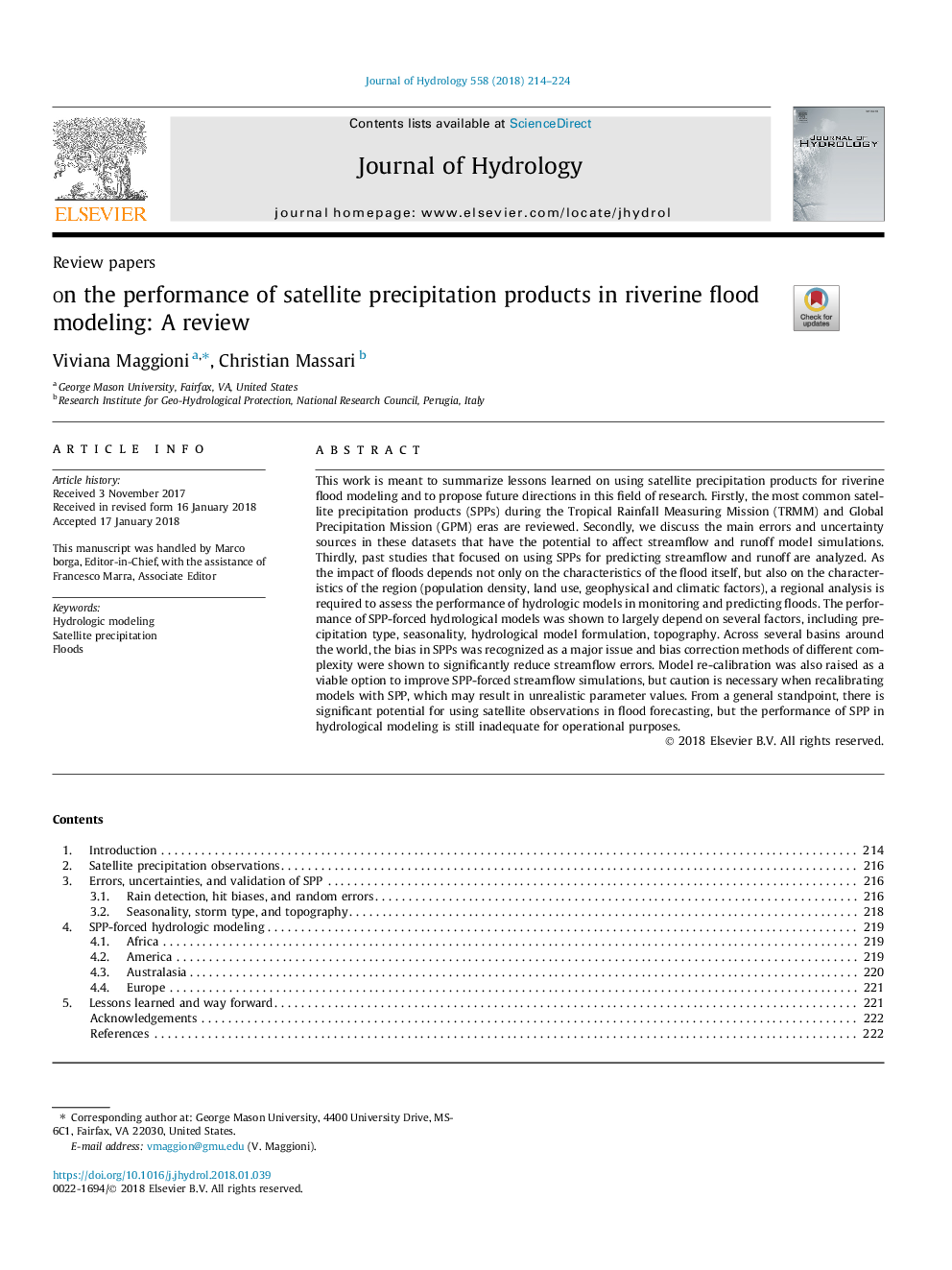| Article ID | Journal | Published Year | Pages | File Type |
|---|---|---|---|---|
| 8894986 | Journal of Hydrology | 2018 | 11 Pages |
Abstract
This work is meant to summarize lessons learned on using satellite precipitation products for riverine flood modeling and to propose future directions in this field of research. Firstly, the most common satellite precipitation products (SPPs) during the Tropical Rainfall Measuring Mission (TRMM) and Global Precipitation Mission (GPM) eras are reviewed. Secondly, we discuss the main errors and uncertainty sources in these datasets that have the potential to affect streamflow and runoff model simulations. Thirdly, past studies that focused on using SPPs for predicting streamflow and runoff are analyzed. As the impact of floods depends not only on the characteristics of the flood itself, but also on the characteristics of the region (population density, land use, geophysical and climatic factors), a regional analysis is required to assess the performance of hydrologic models in monitoring and predicting floods. The performance of SPP-forced hydrological models was shown to largely depend on several factors, including precipitation type, seasonality, hydrological model formulation, topography. Across several basins around the world, the bias in SPPs was recognized as a major issue and bias correction methods of different complexity were shown to significantly reduce streamflow errors. Model re-calibration was also raised as a viable option to improve SPP-forced streamflow simulations, but caution is necessary when recalibrating models with SPP, which may result in unrealistic parameter values. From a general standpoint, there is significant potential for using satellite observations in flood forecasting, but the performance of SPP in hydrological modeling is still inadequate for operational purposes.
Related Topics
Physical Sciences and Engineering
Earth and Planetary Sciences
Earth-Surface Processes
Authors
Viviana Maggioni, Christian Massari,
